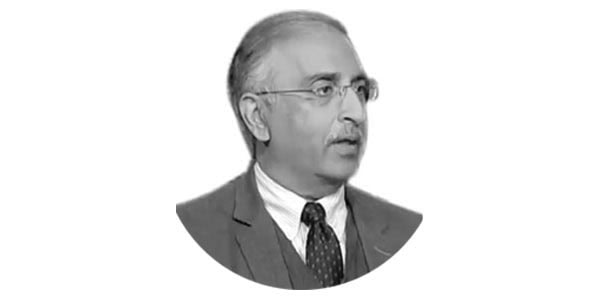Three challenges
The good news is that the Federal Board of Revenue (FBR) has set a new tax collection record. The other good news is that PTI’s flagship Ehsaas Program has disbursed Rs179 billion to 14.8 million deserving households.
Bill Gates, Microsoft’s co-founder, termed the Ehsaas Program a ‘state of the art’ initiative of the country, aimed at alleviating poverty and extending help to the marginalized communities of Pakistan.
The bad news is that imports are soaring, workers’ remittances from the Middle East are declining and debt payments are surging.
In the following twelve months the government’s three biggest challenges would be the taming of inflation, getting hold of a threatening current account deficit and bringing down a ballooning budgetary deficit.
Challenge number 1: Inflation. Globally, Pakistan has the third-highest rate of inflation; Pakistan is behind Argentina and Turkey.
Globally, the average rate of inflation is 4.35 percent as opposed to Pakistan’s 13 percent. Regionally, Pakistan has the highest rate of inflation. India (6%), Bangladesh (5.7%), Sri Lanka (6.9%), Maldives (1.4%), Nepal (5.7%) and Afghanistan (5.6%)-all have a lower rate of inflation than does Pakistan.
In Pakistan, the price of wheat-flour, sugar and electricity have all risen by more than 100 percent over the past three years. From a historical perspective, there hasn’t been a three-year period in Pakistan’s 70-year economic history in which wheat-flour, sugar or electricity had risen by 100 percent.
Over the past 55-year period beginning in 1960 the GDP per capita in Pakistan rose from $83 to a high of $1,428 in 2018.
Since 2018, the GDP per capita in Pakistan has been falling, reaching a low of $1,188. Resultantly, a high rate of inflation and a falling per capita income has driven more than 40 percent of Pakistan’s population below the line of poverty.
Over the past three years, the accumulated burden on an average Pakistani has increased rather rapidly.
With an average income of Rs17,500 a month, petrol at Rs150 per liter, wheat-flour at Rs70 a kilogram, sugar at Rs110 a kilogram and electricity at Rs28 per unit making two ends meet has now become next to impossible.
According to Pakistan Bureau of Statistics (PBS), Wholesale Price Index (WPI), on a year-over-year basis “increased by 23.6 percent in February 2022.” What that means is that the rate of inflation at the consumer level is not about to come down-and would stay ahead of the official target of 8 percent.
Challenge number 2: Current account deficit (CAD). The figure for January has come in at $2.55 billion, the highest ever in Pakistan’s 74-year economic history (CAD is the difference between a country’s foreign expenditure and income).
According to PBS, in the first seven months of the current fiscal year, the trade deficit reached $28.8 billion, up nearly 100 percent compared to the same period of last fiscal. On a projected basis, CAD converts to 6 percent of GDP.
Red alert: CAD is more than 800 percent higher than the annual target set in Budget 2021-22. Such a high level of CAD means continued pressure on SBP’s foreign exchange reserves.
Such a high level of CAD means a high risk of depreciation. To be certain, a lower rupee would mean even a higher rate of inflation. To be sure, this level of CAD is not sustainable-and must, therefore, be reversed.
Challenge number 3: Fiscal deficit. For the credit of the government, the FBR collected Rs3.35 trillion against a target of Rs3.1 trillion, exceeding the 7-month tax collection target by a wholesome Rs262 billion.
Intriguingly, a better than expected performance at the FBR but the federal budget deficit in the first half of the current fiscal year still shot up to Rs1.8 trillion, a 30 percent jump compared to the same period of the last fiscal.
That indicates that the government’s expenditure stream is out of control. The real problem remains that the government’s current expenditures were 92 percent of the total federal government expenditures and 40 percent of those expenditures were spent on servicing debt.
Solutions: A high CAD is a clear indication of an uncompetitive economy. The current hold of ‘cartels’ over Pakistan’s economy would have to be broken, especially the power cartel, the sugar cartel, the fertilizer carter and the automobile cartel.
Next; Pakistan Institute of Development Economics (PIDE) has estimated Pakistan government’s footprint over the economy to be as high as 67 percent. This would have to be brought down. Next; Pakistan must bring down trade restrictions by rationalizing the high tariff regime and reducing the anti-export bias in the trade policy.










